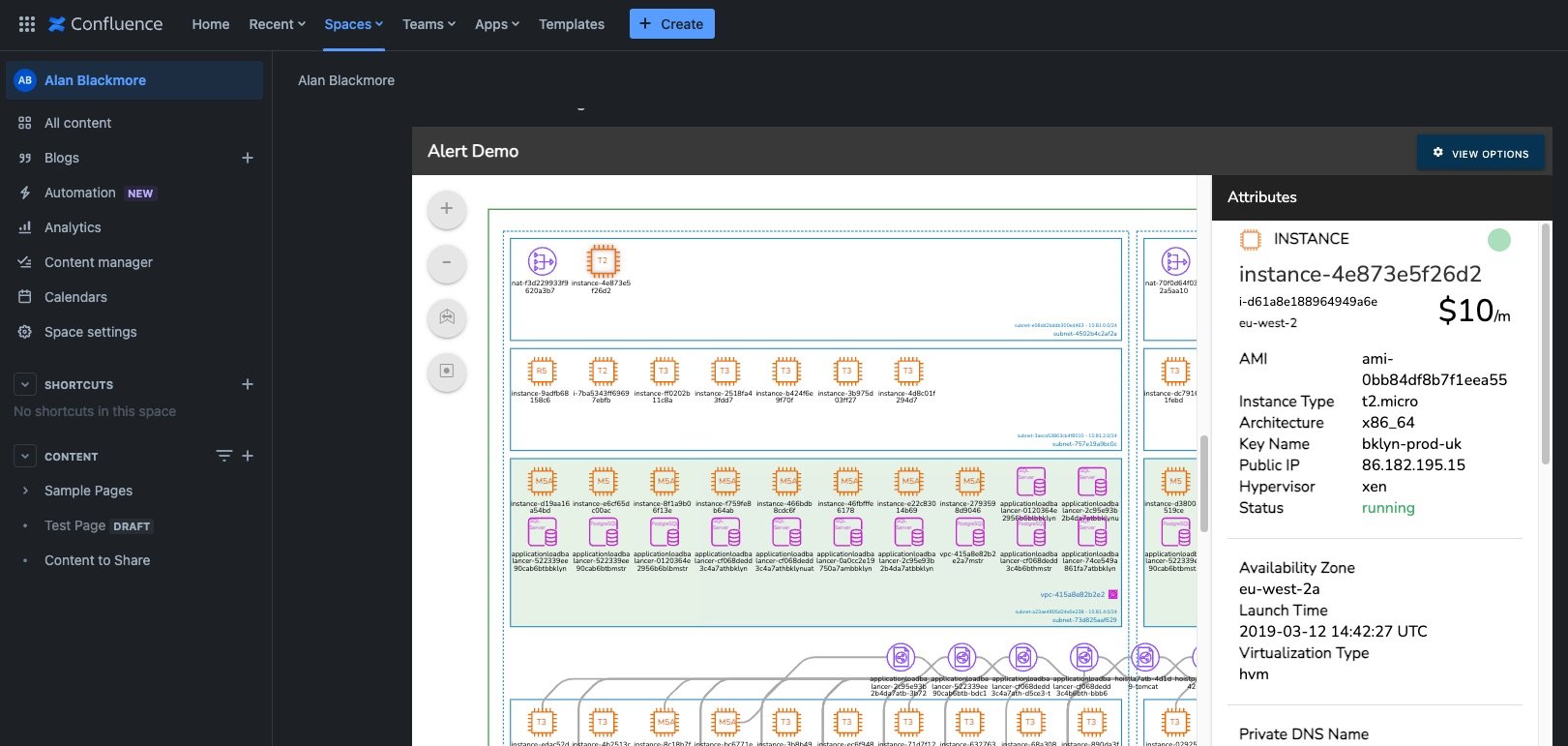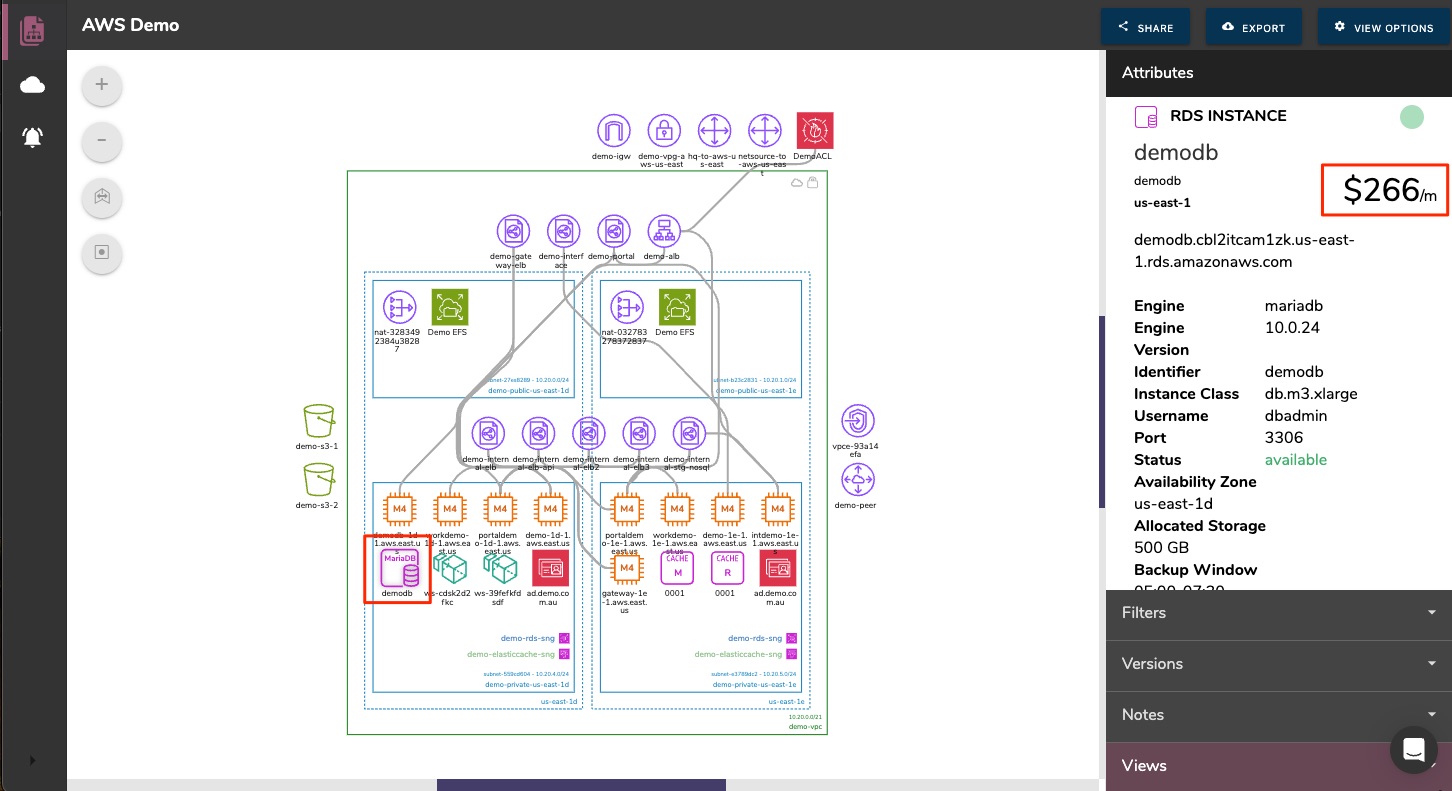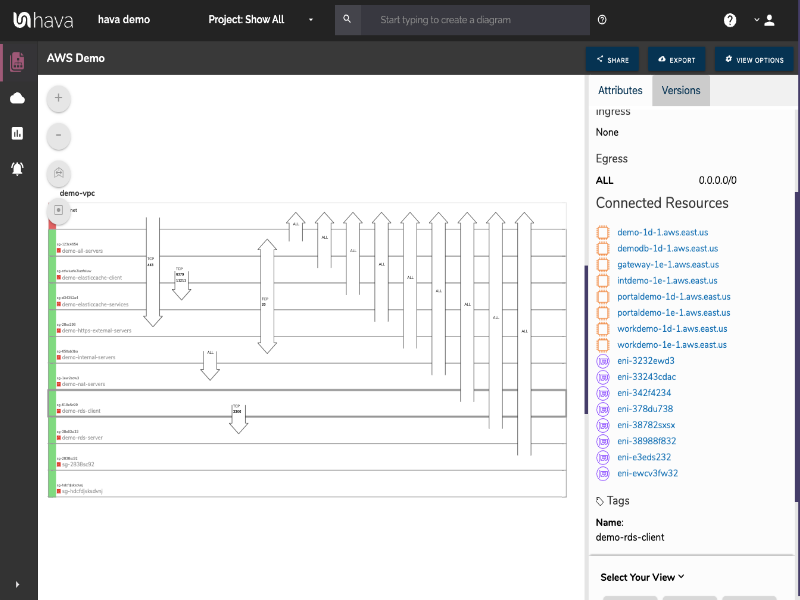Benefits of Dynamic Cloud Visualization with Hava.io
When you connect your AWS, Microsoft Azure or Google Cloud accounts to Hava you generate dynamic cloud architecture and security diagrams automatically.
As your cloud changes, so do the dynamic cloud diagrams - hands free
Table of Contents
- Introduction
- What is Dynamic Cloud Visualization?
- Core Benefits of Dynamic Cloud Visualization with Hava.io
- How Hava.io Enhances Cloud Management
- Practical Applications of Dynamic Cloud Visualization
- FAQ
- Conclusion
-
Introduction
As your applications mature cloud computing infrastructure becomes more complex and widespread, making effective management tools indispensable. Dynamic cloud visualization stands out as a transformative approach for enterprises, with Hava.io leading the charge. This solution provides real-time, automated insights into cloud architectures, facilitating better management, compliance, and optimization. -
What is Dynamic Cloud Visualization?
Dynamic cloud visualization involves the real-time graphical representation of a cloud environment's architecture. This technology automatically updates to reflect any changes in the cloud infrastructure, providing a continuous, accurate view of how cloud resources are configured and interconnected. -
Core Benefits of Dynamic Cloud Visualization with Hava.io
- Automated Diagram Updates: Automatically generates and updates cloud architecture diagrams, eliminating manual efforts and reducing errors.
- Enhanced Decision-Making: Offers real-time data visualization, helping stakeholders make informed decisions quickly.
- Improved Compliance and Security Monitoring: Simplifies tracking of compliance with standards and regulations and enhances the ability to detect security vulnerabilities.
-
How Hava.io Enhances Cloud Management
Hava.io integrates seamlessly with cloud service providers like AWS, Azure, and Google Cloud, extracting data to visualize complex cloud environments effectively. This integration ensures that all cloud components, such as virtual machines, storage systems, and network configurations, are accurately represented and easy to understand. Key features include:
- Real-Time Synchronization: Keeps diagrams current as changes occur, providing an up-to-date representation of the cloud environment.
- Interactive Visuals: Allows users to interact with the diagrams, offering deeper insights into each component’s specifics and their relationships.
- Version Control: Maintains a history of all changes, enabling rollback to previous configurations if necessary.
-
Practical Applications of Dynamic Cloud Visualization
Dynamic cloud visualization is particularly beneficial in scenarios such as:
- Capacity Planning: Assists in understanding resource utilization to effectively plan future capacity needs.
- Troubleshooting and Maintenance: Accelerates problem identification and resolution by clearly showing the interdependencies and operational status of all cloud resources.
- Audit and Compliance: Streamlines the audit processes by providing clear, detailed visual evidence of the cloud infrastructure’s compliance with regulatory requirements.
-
FAQ
- Q: How does dynamic cloud visualization support cost management?
- A: By providing visibility into resource utilization, helping identify and eliminate wasteful spending.
- Q: Can Hava.io visualize hybrid and multi-cloud environments?
- A: Yes, Hava.io is capable of integrating and visualizing data across multiple cloud platforms and hybrid environments.
- Q: What makes Hava.io different from traditional cloud management tools?
- A: Hava.io focuses on automation, real-time updates, and user-friendly interactive diagrams, which are not typically offered by traditional tools.
7. Conclusion
Dynamic cloud visualization is a crucial component of modern cloud infrastructure management, offering significant advantages over traditional static methods. With its powerful automation, real-time updating capabilities, and comprehensive visualization, Hava.io provides businesses with the tools necessary to manage their cloud environments more effectively, securely, and compliantly. Embracing this technology means embracing a future where cloud management is simplified, yet more powerful than ever.






